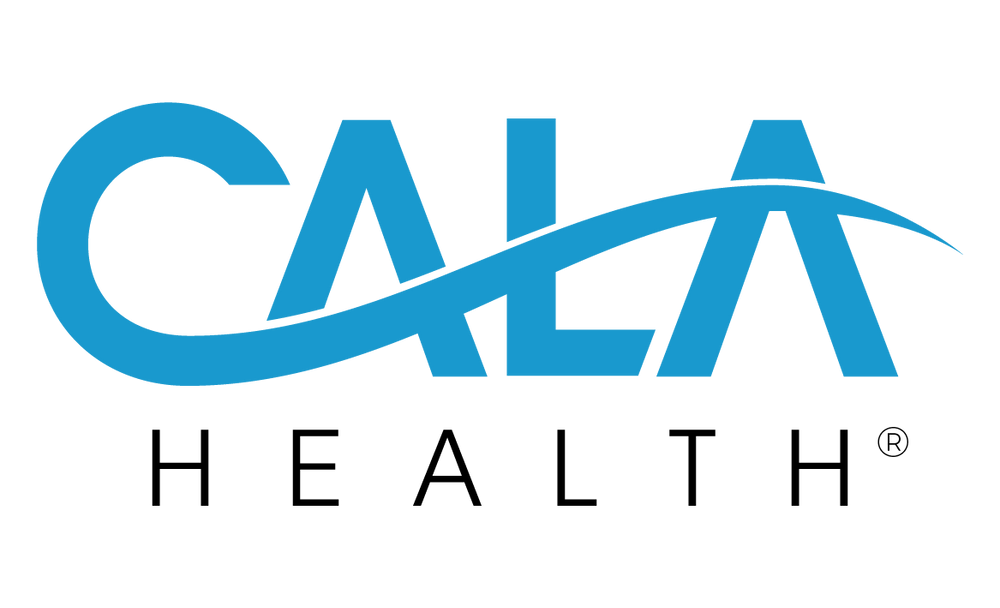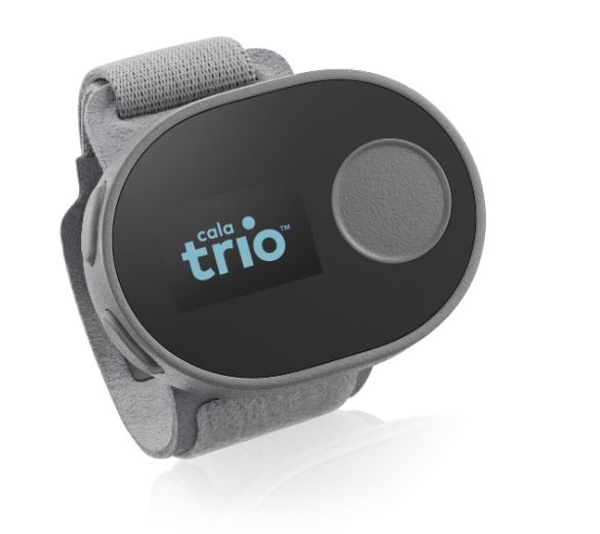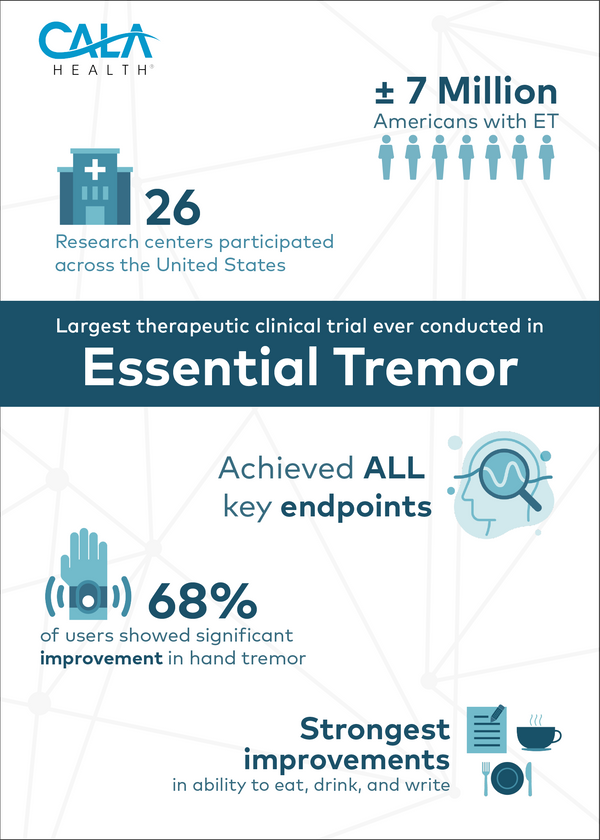Burlingame, CA – September 25, 2019- Cala Health, Inc., a bioelectronic medicine company developing wearable therapies for chronic disease, presented positive topline data from the landmark PROspective study for SymPtomatic relief of Essential tremor with Cala Therapy (PROSPECT) in a late-breaking poster presentation at the International Congress of Parkinson’s Disease and Movement Disorders on September 25, 2019, in Nice, France. Cala Therapy, now marketed as Cala Trio™, is available by prescription in the United States. This wrist-worn neuromodulation therapy is the only non-invasive individualized therapy for essential tremor (ET).
PROSPECT is the largest therapeutic trial ever conducted for ET, the most common tremor disorder, affecting over seven million people in the United States. The study met its co-primary and secondary endpoints, achieving statistically significant improvements in symptomatic relief of ET in the treated hand at three months compared to baseline. Symptomatic relief was measured using multiple ratings, including The Essential Tremor Rating Assessment Scale (TETRAS), a physician rating, (p< 0.0001) and Bain & Findley Activities of Daily Living (ADLs), a patient rating, (p<0.0001). Tremor power was measured using motion sensors (p< 0.0001). No device-related serious adverse events were reported.
“In the prospective PROSPECT trial, we found that 68% of patients showed significant improvement in hand tremor after wearing the Cala Therapy for three months, as measured by the ADL assessment scale. For patients living with ET, this means that they can now more easily complete daily tasks such as handwriting, drinking from a glass, and using a soup spoon - tasks that were otherwise much more difficult,” said Stuart Isaacson, MD, Director of the Parkinson’s Disease and Movement Disorders Center of Boca Raton in Florida. “The therapy is calibrated to each patient’s hand tremor. When activated, it gently stimulates the nerves at the wrist, which interrupts the tremulous circuit in the brain and results in tremor reduction. Treatment with Cala Trio represents a novel approach to improving tremor in people living with ET and provides a safe and effective therapeutic option.”
Details about the Study and Topline Data
PROSPECT was a prospective, 26-center, single-arm study designed to evaluate the symptomatic relief from hand tremor in ET with repeated use of Cala Therapy. Patients were instructed to use the device for 40-minute sessions twice daily for three months. The device was calibrated to each patient’s tremor frequency and delivered patterned electrical stimulation to nerves through the skin. The study enrolled 263 patients with an average duration of ET symptoms lasting over 25 years.
Data show 62% of patients improved in tremor severity from severe/moderate to mild/slight according to TETRAS and 68% of patients improved in tremor severity from severe/moderate to mild according to ADLs (baseline vs. three months). The average symptom relief lasted 96.7 + 12 minutes after each stimulation session for patients that reported benefit.
Secondary endpoint analysis of motion sensor data obtained by Cala Therapy showed that 54% of patients experienced greater than 50% improvement in tremor power for the three-month study. Over 21,000 stimulation sessions were collected and analyzed. Clinical and patient global impression of improvement showed that 68% of clinicians and 60% of patients rated improvement at three months. Significant improvement was also reported in Quality of Life in Essential Tremor Questionnaire (QUEST) scores. Transient device-related adverse events such as wrist discomfort, skin irritation, or pain occurred in 18% of patients. None required medical intervention.
“We are thrilled with the results of the PROSPECT trial. It is tremendously exciting to see the relief our non-invasive neuromodulation therapy brings to patients with ET, without surgery or drugs,” said Kate Rosenbluth, Founder and Chief Scientific Officer at Cala Health. “We are deeply grateful to the patients and investigators who participated in this study.”
Cala Health has submitted the full data set from this study for publication.
About Essential Tremor (ET)
ET is the most prevalent tremor disorder and one of the most common neurological disorders, affecting an estimated seven million people in the United States. It is a chronic condition that causes involuntary and rhythmic shaking and typically worsens over time. ET can affect almost any part of the body, but the trembling most often occurs in the hands, making everyday activities such as eating, writing, or getting dressed extremely difficult. ET is often confused with Parkinson’s disease, although it is eight times more common. A key difference is that hand tremors caused by essential tremor happen with goal-directed movement (with intention) whereas Parkinson’s disease tremors occur mostly at rest. Current ET treatments include mostly off-label use of medications or brain surgery.
About Cala Trio™
Cala Trio is a breakthrough on-demand therapy for hand tremor in adults with essential tremor (ET). The wrist-worn neuromodulation device is the only non-invasive individualized therapy for ET. Cala Trio is calibrated to each patient’s hand tremor. When activated, the device gently stimulates the nerves responsible for the tremor to provide symptomatic relief. Cala Trio is FDA cleared and currently available by prescription in select US markets. For more information, visit CalaTrio.com.
About Cala Health, Inc.
Cala Health is a bioelectronic medicine company transforming the standard of care for chronic disease. The company's wearable neuromodulation therapies merge innovations in neuroscience and technology to deliver individualized peripheral nerve stimulation. Cala Health’s lead product, Cala Trio™, is the only non-invasive prescription therapy for essential tremor and is now available through a unique digital business model of direct-to-patient solutions. New therapies are under development in neurology, cardiology, and psychiatry. The company is headquartered in the San Francisco Bay Area and backed by leading investors in both healthcare and technology. For more information, visit CalaHealth.com.







